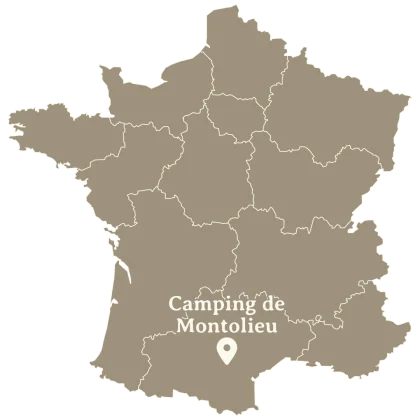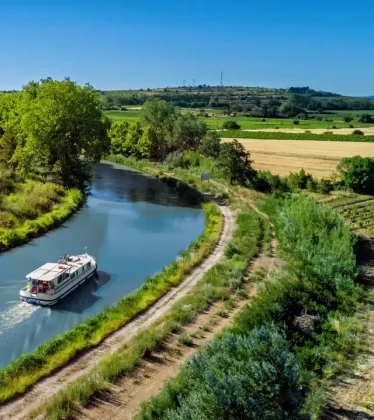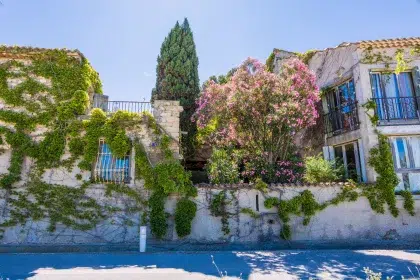
Cultural and historical stay
After a peaceful night’s rest and a delicious breakfast, there are plenty of options to immerse yourself in the region’s history and culture, exploring its iconic sites and rich heritage.

Just two kilometers from the campsite, stroll through the narrow streets of Montolieu, Village du Livre et des Arts. Push open the door and enter the world of each bookshop and bouquiniste (over 15 in the village!), observe the skills of craftsmen and artists (pottery, jewelry and much more), discover the book trades at the Musée des Arts et Métiers du Livre by taking part in workshops (illumination, engraving, bookbinding, calligraphy…) and visiting artists’ exhibitions.
Dive into the rest of the story
Don’t miss the historical page of the Spanish Retirada in front of the Manufacture Royale Fresco.
After a tasty break in one of the village’s 5 restaurants, take the road to the Cistercian Abbey of Villelongue. In addition to the history of this place, discover the poetry of today’s building and gardens.
Continue on to the village of Saissac. This picturesque village in the Cathar region has a lot to offer. Its medieval castle, dominating the valley, offers an exceptional panorama and tells the story of the region. The village, with its typical narrow streets and stone houses, is an inviting place to stroll. Don’t miss Saint-Pierre church and its cloister, as well as the remains of the feudal castle.
Dive into the rest of the story
You can then continue on your way to the Prise d’Alzeau, also known as the source of the Canal du Midi. Located at an altitude of over 680 meters on the Alzeau torrent, it marks the start of the Montagne Noire channel, one of Pierre-Paul Riquet’s major achievements in supplying water to the Canal du Midi.
This ingenious system brings water from the heights of the Montagne Noire, via the hamlet of Le Conquet, to the water divide.
Now head for Brousses et Villaret and its unmissable Moulin à Papier. Following in the footsteps of the book artisans, a visit to the mill is a must. Set in a treasure trove of greenery, discover the magic of handmade paper at the last remaining mill in the Occitanie region… During your visit, immerse yourself in the history of paper, explore the old machines (Dutch stacks, meuleton) and hydraulic motors (bucket wheel, turbine), then watch a demonstration of hand-form making. If you feel like it, you can also get your hands dirty…making paper!
After this tour of the undergrowth, climb up to the village of Aragon. With its medieval remains, such as the fortified castle and the 12th-century church of Saint-Étienne, Aragon bears witness to its feudal and religious past. Its architecture and picturesque streets are a reminder of the village’s strategic importance in the Middle Ages.
In addition to its historic heritage, Aragon benefits from an exceptional natural setting, between the Montagne Noire and the Canal du Midi, offering magnificent panoramas and hiking opportunities. The village is also a lively cultural center, with local events celebrating traditions and terroir.
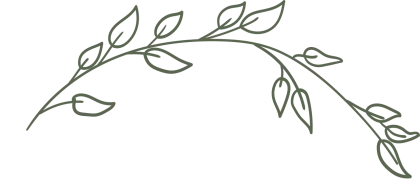
Day 1
Around Montolieu
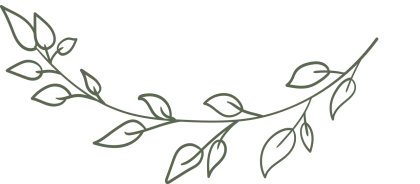
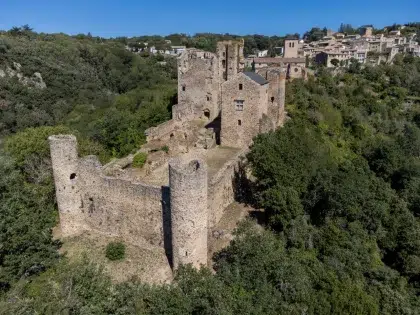

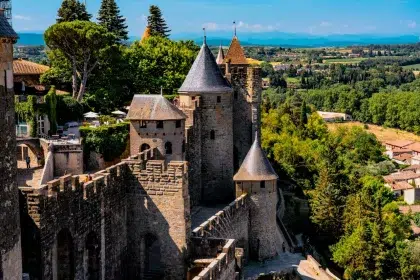

Day 2
Castle life

Carcassonne’s medieval city takes center stage on this second day. Listed as a UNESCO World Heritage Site, the Cité Médiévale is a real trip back in time.
Fortified and perfectly preserved, it boasts impressive ramparts, towers and a château comtal.
Dive into the rest of the story
Stroll along its cobbled streets, and you’ll discover medieval buildings, lively squares and the church of Saint-Nazaire with its magnificent stained glass windows.
The visit plunges you into the history of this strategic city, witness to the battles between the Cathars and the Crusaders, and allows you to appreciate its exceptional defensive architecture.
Dive into the rest of the story
In July and August, visit the ramparts by night, thanks to the Remparts et Lumière animation. And don’t forget the famous city fireworks display on July 14.
Have you enjoyed a cassoulet in the shelter of the city walls?
A digestive walk is a must! Climb the 4 castles of Lastours: Lastours is an impressive archaeological site, with four castles (Cabaret, Tour Régine, Surdespine, Quertineux) perched on a rocky base, and a medieval village, Castrum de Cabaret, nestling in the valley.
The tour is divided into two stages: a panoramic view from the Belvedere, then access to the monuments via a pathway from the former textile mill.


Day 3
Along the Canal du Midi

From Carcassonne, choose between a guided cruise on the Canal or a road trip with your own car. For a visit by car, here are the must-sees:
Leaving Carcassonne, head for Marseillette and make your first stop at Trèbes: its picturesque marina, its charming village on the banks of the Aude, with its charming little streets and the church of Saint-Étienne, which contains a real treasure: the painted wooden corbels, a unique example of local art.
Dive into the rest of the story
Along the way, between the villages of Marseillette and Puichéric, you’ll follow the Canal du Midi, which passes near the Aiguille lock. At this point, the canal borders a former Marseillette marshland. Interestingly, this area was once part of the sea during the Tertiary Era, offering a fascinating insight into the geological evolution of the region.
Apple orchards and rice paddies are grown in the area around the Marseillette dry pond, making Marseillette the most rice-producing commune in the Aude department in the 21st century.
Puichéric: Nicknamed the “Venice of the Minervois”, the Canal du Midi, the Aude and the Rigole all run through the commune, creating magnificent landscapes to discover.
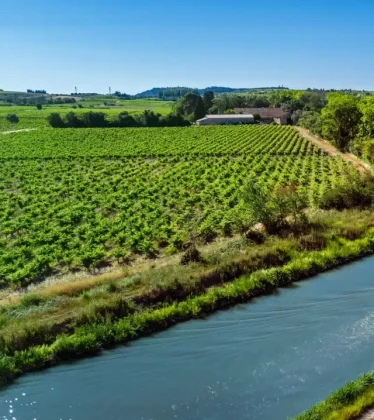
The village’s history is fascinating, not least for its castle, which may date back to the 6th or 7th century. Formerly fortified by the Visigoths, it was partially destroyed by English troops in the 14th century. Later, Paul Riquet, creator of the Canal du Midi, took up residence here. Although private and inaccessible, the château remains a symbol of Puichéric’s rich history.
Dive into the rest of the story
Now head for Rieux Minervois. This picturesque village in the heart of the Minervois region boasts medieval streets, a Romanesque church and the remains of a castle. With its friendly atmosphere, shady square and local shops, it’s an ideal place to stroll. The village is also renowned for its wine, with many wineries to discover.
Your journey now continues to the village of Homps on the shores of Lac de Jouarres. Formerly a stopover on the Roman road and a center for the transport of tin, it enjoyed a boom thanks to the Canal du Midi, completed in the 17th century.
Today, Homps is renowned for its port, its yachtsmen and its fine wines, notably Minervois, Languedoc and Coteaux-de-Peyriac.
Leaving Homps, head for Argens Minervois, a village with a rich history: inhabited since prehistoric times, formerly Villa Arsegii (881), the village owes its name to the geological composition of its soils.
Here you can see the château, the church of Notre-Dame de l’Assomption, the church of Saint-Roch, the fresh fountain, the irrigation walls and tower, the Tuilerie (the remains of an old kiln bear witness to the presence of an important tile factory) and the Lac des Aiguilles. End your tour in the village of Le Somail: in the heart of the Minervois region, Le Somail is a charming place, preserved since the days of the Canal du Midi in the 17th century, and continues to inspire many artists. Its buildings, which have remained intact since the creation of the canal, are a reminder of the days when travelers on the mail barge used to stop here for dinner and the night.
It’s pleasant to take a break in this picturesque, flower-filled village, explore its chapel, lock keeper’s house and cross its pretty stone bridge. There’s also an excellent bookshop to remind you of the charm of Montolieu, and a floating grocery store housed in a Dutch barge.


Day 4
From village to village

Villesèquelande, Le village de l’arbre: home to a 400-year-old field elm, classified as “remarkable”, making it the world’s first Village de l’Arbre. It’s also a place for street art, with a monumental 1000 m² fresco in the Vignerons de la Voie romaine cooperative cellar.
You’ll also find the Aude region’s only hazelnut producer, offering products under the “Sud de France” label (hazelnuts, oil, spreads), as well as cosmetics under the Secret des Avelines brand.
Dive into the rest of the story
Villesèquelande has shops, restaurants, accommodation and the Maison des Arts et de la Nature, with exhibitions and cultural events. The Canal du Midi and its stone bridge provide a pleasant backdrop.
Alairac: located at the foot of the Malepère massif, a Natura 2000 site. Surrounded by oak woods, it’s a popular spot for wild boar and mushroom gatherers.
Founded around the year 1000, Alairac is a “circulade”, a typical Languedoc village built in a circle around a castle or church to protect itself from invaders. It boasts a rich heritage, with three Monuments Historiques: the 13th-century church of Saint-Germain, the Catuffe cross and the Saint-Germain cross.
The village offers a wide range of services, including a multi-service shop selling local produce and quality wines from the Malepère AOC vineyard.
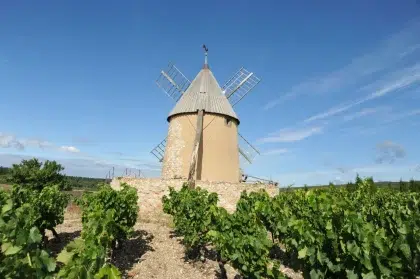
Dive into the rest of the story
Alairac is also home to producers of black truffles, olive oil, sunflowers and top-of-the-range flour. Every year, an art exhibition honors local painters and sculptors, in conjunction with the village fête at the end of July. At the Maison des Arts, visitors can discover the works of painter Eliab le berger, whose creations decorate several places in the village.
Villeneuve Minervois: gateway to the Gorges de la Clamoux and the Montagne Noire, this charming village nestles in the heart of vineyards and garrigues. It boasts a rich gastronomic heritage, notably Occitan black truffles and quality wines. On the road to the Gouffre Géant de Cabrespine, you’ll pass through this typical Minervois village, shaded by century-old plane trees. In addition to its bucolic setting, Villeneuve-Minervois also attracts visitors with its gastronomy, offering truffle and wine tastings.
The village boasts a château des chanoines, a 13th-century medieval tower similar to those in Carcassonne, as well as defensive gates and wrought-iron sculptures to be discovered on a walking tour. Nearby are the windmill (not open to visitors) and the Saint-Mammès chapel, surrounded by vineyards and truffle fields. Dolmens, such as the Palet de Roland, are also worth exploring.
Dive into the rest of the story
The Maison de la Truffe d’Occitanie offers an interactive tour of the history and cultivation of truffles. Caunes Minervois, Red Marble Capital of the World. Known for its red marble used in the Château de Versailles and other famous monuments, this pretty village is also famous for its 13th-century Benedictine abbey and its rich historical and gastronomic heritage.
The village is distinguished by its Renaissance architecture, with mansions dating from the 11th to 18th centuries, carved doors and mullioned windows. Two discovery trails explore the marble sculptures and historic sites, including Place de la République, the ramparts and the washhouse. In summer, an arts trail allows you to visit the studios of local artists.
Caunes-Minervois is also famous for its marble quarries, which date back to Roman times and reached their peak under Louis XIV. Visitors can discover this heritage through the marble sculpture circuit, the marble ecomuseum and the marble safari, a guided tour of the historic quarries (booking required).
The Maison de la Truffe, art galleries and local boutiques offer a creative gastronomic experience, while the peaceful site of nearby Notre-Dame du Cros invites you to hike and relax in an enchanting natural setting.

Our favorites

Our favorite: Discover Montolieu in a comfortable Buggy with Montol Aventure, departing from the campsite!
Want more? Musée des Beaux Arts de Carcassonne, Musée de la Paléontologie Villeneuve Minervois, Musée de l’inquisition Carcassonne, Saint Papoul, Mazamet, Toulouse, Musée de l’école Carcassonne. To combine history and hiking, La Grotte des Maquisards.
After a day full of discoveries, come to La Terrasse to share your experiences and meet new Aude treasures at our weekly local markets.

